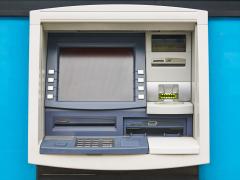In highly regulated industries like mining, compliance often feels like a barrier to innovation. But when governance is built into design, it becomes a catalyst for creativity.
Carla de Abreu, Senior Portfolio Manager at Dariel, says that by bridging structure and imagination, compliance is transformed into an enabler of progress: “Compliance can be a significant change agent when approached strategically, as opposed to just a 'box-ticking' exercise. While often viewed as a necessary cost or a potential barrier to innovation, adherence to regulations and ethical standards ultimately provides a stable and trustworthy foundation for sustainable growth.”

While compliance and creativity are often seen as opposites — especially in industries governed by strict regulation, de Abreu says that it is entirely possible to change this perception.
“Creativity isn’t about breaking rules,” she says. “It’s about designing smarter ways to meet them. True innovation happens when governance is embedded in the process, not bolted on at the end. This was the thinking behind a project at a leading multinational and metals processing group and its transformation journey.”
De Abreu says that the manual change management process within the group had become a bottleneck. There were multiple spreadsheets, disconnected databases, and long email chains that created compliance risks and slowed decision-making. “Without a clear view of ownership or accountability, change requests dragged — discouraging innovation and adding to operational complexity,” says de Abreu.
Dariel looked beyond simple automation. The goal was not just to digitise the process, but to design governance that empowers people. The company introduced structured digital workflows that are intuitive yet automatically compliant: “We introduced an Integrated Active Directory for role-based access, embedding accountability into the platform. We consolidated multiple legacy databases and added Windows services into a single, unified system, transforming complexity into clarity. This wasn’t technology for technology’s sake — it was governance by design.”
The Impact was immediate according to de Abreu. Teams can now request, review, and approve changes quickly while maintaining full auditability. Leaders have real-time visibility into what’s changing, why, and where bottlenecks occur. And the biggest win is that compliance became a natural part of work, not an afterthought.
This resulted in a culture shift from cautious compliance to confident, creative governance. And it ensures that compliance doesn’t have to kill creativity. When systems are well-designed, it fuels it. “By bridging technical rigour with human-centered design, we continued to help a highly regulated industry transform governance from a burden into a competitive advantage.”
#toptips
- Design compliance into the workflow, not around it.
- When governance is built into how people work, it becomes effortless instead of obstructive.
- Empower, don’t restrict.
- Digital governance tools should give teams confidence to act, not slow them down.
- Make visibility your foundation.
- Real-time insight into change requests and ownership unlocks accountability and faster decisions.
- Simplify complexity.
- Integration across systems is where compliance and creativity meet, turning clutter into clarity.
- Culture follows design.
- When people experience compliance as helpful, not heavy, the mindset naturally shifts from cautious to confident.














